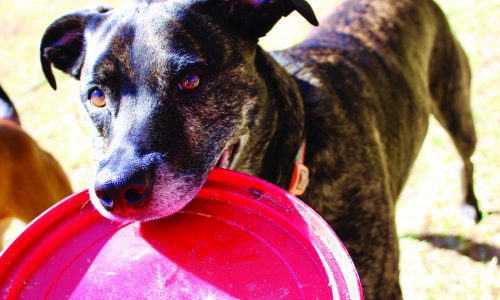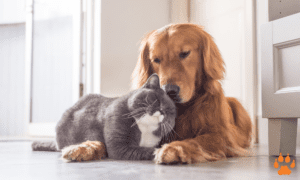By: Dr. Veja Tillman, DMV
Summertime is fun time! But with the extreme heat here in Southwest Florida, we must take extra special care of our pets to protect them from developing heatstroke.
Heatstroke is one of the most seen conditions of pets in the summertime. Heatstroke can occur when an animal’s temperature rises to a critical level. Normal body temperatures for dogs and cats range from 100 to 102.5 degrees. Anything temperature greater than normal can put your pet at risk of developing this condition. Under extreme conditions, where a dog’s temperature rises to 106 degrees (or a cats to 105 degrees) or higher they can suffer irreparable organ damage and even die.
Extreme temperatures can cause heatstroke. Some signs of heatstroke are heavy panting, glazed eyes, a rapid heartbeat, difficulty breathing, excessive thirst, lethargy, fever, dizziness, lack of coordination, profuse salivation, vomiting, a deep red or purple tongue, seizure, and unconsciousness.
Some conditions make pets more susceptible to developing heatstroke: very old or very young pets, pets that are overweight, pets with heart or respiratory disease, and breeds such as pugs, bulldogs, boxers, Shih Tzus and other dog or cat breeds with short muzzles will have a harder time breathing in extreme heat.
Here are some tips to help keep your pet safe from the heat this summer.
- Never leave your pet in a parked car. Even with the windows rolled down, on an average summer day, a parked car can reach temperatures greater than 105 degrees within 10 minutes. After 30 minutes, the temperature will reach 120 degrees. So, do not take a chance on your pets’ life. If it is too hot for you, it is too hot for your pet as well. Your pet may suffer irreversible organ damage or die due to the hot conditions.
- Limit Exercise on hot days. Try to limit exercise to the very early morning or late evenings to reduce the impact of the heat. Adjusting the amount of time and the intensity of the activity helps to reduce the impact of the heat on your pet. Be especially careful with pets with white coats or short snots as they will be especially susceptible to the development of sunburn, skin cancer and breathing problems due to prolonged exposure to the heat (and Sunlight).
- Hydrate your pet often. Always carry water to help keep your pet hydrated or make sure your pet always has access to fresh clean cool water. Stop your pet’s playtime activity and offer cool water to help cool your pet from the inside. “Pup”sicles (Homemade ice cubes/ treats for pets) are a great treat for pets to snack on and cool off at the same time.
- Avoid hot surfaces. Concrete and asphalt can reach temperatures hotter than the surrounding air. They also continue to release heat well after the sun has gone down. Hot concrete or asphalt can burn your pet’s paws and skin severely. Avoid these areas, if possible, especially during the hottest parts of the day. If grassy or dirt covered areas (not sand, it gets very hot too!) are available for your pet to walk or play on, opt for that instead of the sidewalk or asphalt.
- Watch for signs of heat stroke. If you think your pet is suffering from heatstroke, wet your pet’s whole body (down to the skin) with cool water (DO NOT give your pet an ice bath!) and immediately take them to your veterinarian or the nearest emergency hospital for additional treatment.
ABOUT DR. TILLMAN, DMV
Dr. Tillman is a 2002 graduate of Tuskegee University School of Veterinary Medicine. Her veterinary practice and work experience focuses on the health and wellness of pets. She is the owner of Just 4 Pets Wellness Center and can be reached at 239-270-5721.








